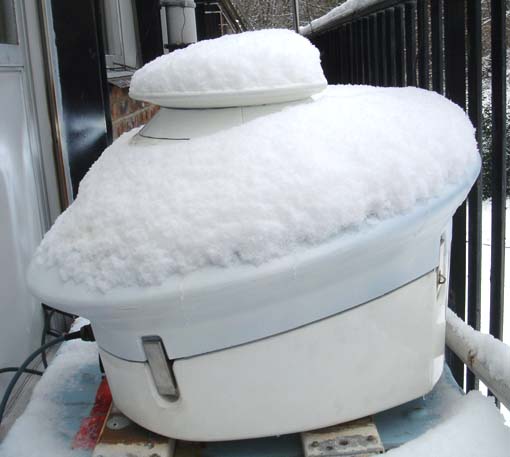SAOZ SYSTEME D'ANALYSE PAR OBSERVATION ZENITHALE
|
SAOZ
is UV-Visible (300-650 nm) diode array spectrometer developed at the
Service d’Aéronomie in the late 80’s for
monitoring stratospheric ozone after the discovery of the ozone hole by
Farman et al. in 1985. It is a diode array flat field spectrometer of 1
nm resolution looking at sunlight scattered at zenith during twilight.
The data analysed by Differential Optical Absorption Spectrometry allow
the retrieval of daily ozone and NO2 total
columns at sunrise and sunset, as well as total water vapour and oxygen
dimmer and the detection of Polar Stratospheric Clouds (PSC) and
volcanic aerosols.
|
 |
The ozone
measurement for the first time in the visible Chappuis bands between
450-600 nm, allows the continuous monitoring of the species throughout
the year at the latitude of the polar circle, in all weather
conditions.
First deployed in
1988 in both Dumont d’Urville in Antarctica (Pommereau and
Goutail, 1988a) and Sodankyla in Finland (Pommereau and Goutail,
1988b), twenty SAOZ owned by CNRS and other institutes have been
installed progressively since then at all latitudes including in the
tropics. Alltogether their measurements are being used for monitoring
every year the ozone destruction in the Arctic, for trend analysis and
for the validation of a number of satellite O3
and NO2 column measurements (SBUV, TOMS, GOME,
SCIAMACHY, OMI, GOME-2, IASI, OMPS-NPP, TROPOMI)
The SAOZ
performances have been continuously evaluated during NDACC UV
intercomparison campaigns in New-Zealand in 1992 (Hofmann et al.,
1995), at Camborne in the UK in 1995 (Vaughan et al., 1996),
Observatoire de Haute Provence in 1996 (Roscoe et al., 1999), Andoya
in Norway in 2003 (Vandaele et al., 2005) and more recently in Cabauw (Netherland) in 2009 (Roscoe et al., 2010) and 2016 (Kreher et al., 2019 in preparation).

Back to Chimie de L'Atmosphère

